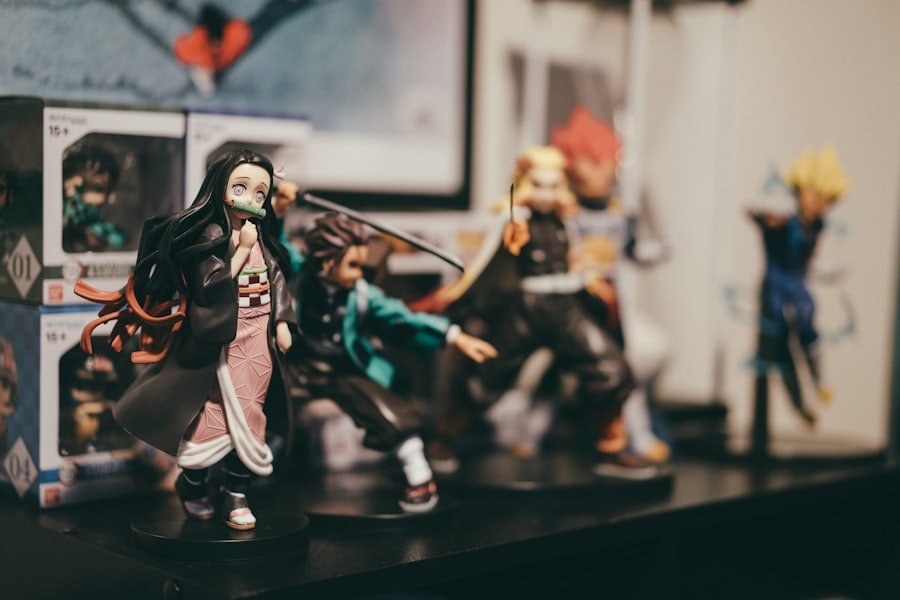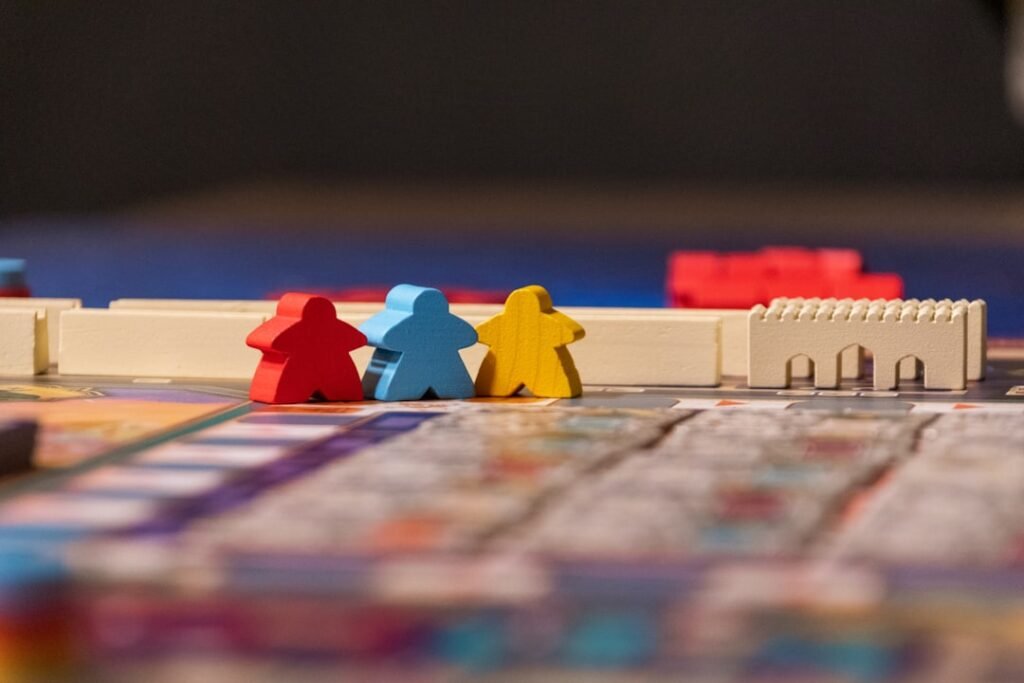Now Reading: The Top Roguelikes with Persistent Progression
-
01
The Top Roguelikes with Persistent Progression
The Top Roguelikes with Persistent Progression

Roguelikes are a subgenre of role-playing games characterized by procedural generation, turn-based gameplay, and permanent death. The term “roguelike” originates from the 1980 game “Rogue,” which set the foundation for many mechanics we see in the genre today. However, roguelikes with persistent progression introduce a fascinating twist to this classic formula.
In these games, players can retain certain elements of their progress even after facing the inevitable demise of their character. This could manifest as unlocking new classes, abilities, or items that persist across playthroughs, creating a sense of growth and development that contrasts sharply with the traditional roguelike experience. The concept of persistent progression adds layers of complexity to the gameplay.
While I still face the challenge of starting anew with each run, I also have the satisfaction of knowing that my efforts contribute to a larger goal. This blend of immediate challenge and long-term growth creates a unique dynamic that keeps me engaged.
This duality is what makes roguelikes with persistent progression so compelling and distinct from their more traditional counterparts.
Key Takeaways
- Roguelikes with persistent progression combine the challenging, procedurally generated gameplay of traditional roguelikes with the ability for players to make permanent progress over multiple runs.
- The appeal of persistent progression in roguelikes lies in the sense of accomplishment and investment that comes from gradually improving characters and unlocking new content.
- Some of the best roguelikes with persistent progression include games like Hades, Dead Cells, and Slay the Spire, which offer a compelling mix of challenging gameplay and long-term progression.
- Persistent progression adds depth to roguelike games by giving players a sense of investment and allowing for strategic decision-making beyond individual runs.
- Balancing randomness and progression in roguelikes with persistent progression is crucial for maintaining the genre’s core challenge while still providing a sense of long-term advancement for players.
The Appeal of Persistent Progression in Roguelikes
The allure of persistent progression in roguelikes lies in its ability to create a rewarding cycle of challenge and achievement. Each time I embark on a new run, I am met with the thrill of uncertainty, as the procedural generation ensures that no two experiences are ever the same. However, knowing that I can carry over certain upgrades or unlocks from previous runs provides a comforting sense of continuity.
This balance between risk and reward is what keeps me coming back for more, as I strive to improve my skills while also reaping the benefits of my past efforts. Moreover, persistent progression fosters a deeper emotional connection to the game. As I invest time and energy into unlocking new features or enhancing my character’s abilities, I feel a sense of ownership over my journey.
Each victory feels more meaningful because it is built upon the foundation of my previous experiences. This emotional investment transforms the gameplay from a mere series of challenges into a personal narrative where I am the hero, constantly evolving and adapting to overcome obstacles.
The Best Roguelikes with Persistent Progression

When it comes to identifying the best roguelikes with persistent progression, several titles stand out in my mind. One such game is “Hades,” which masterfully combines fast-paced action with a rich narrative and character development. In “Hades,” I play as Zagreus, the son of Hades, attempting to escape the Underworld.
Each run offers new challenges, but I can also unlock various upgrades and boons that enhance my abilities for future attempts. The game’s engaging story and well-developed characters make every run feel significant, as I uncover more about the lore with each escape attempt. Another title that deserves mention is “Dead Cells.” This game blends roguelike elements with Metroidvania mechanics, allowing me to explore a beautifully crafted world filled with secrets and challenges.
The persistent progression system in “Dead Cells” allows me to unlock new weapons and abilities that carry over between runs, making each subsequent attempt feel fresh yet familiar. The combination of skill-based combat and strategic planning keeps me on my toes, ensuring that no two runs are ever alike while still rewarding my dedication to mastering the game.
How Persistent Progression Adds Depth to Roguelike Games
Persistent progression adds significant depth to roguelike games by introducing layers of strategy and decision-making that would otherwise be absent. As I navigate through each run, I must consider not only my immediate survival but also how my choices will affect future gameplay. For instance, when deciding which upgrades to pursue or which paths to take, I weigh the potential benefits against the risks involved.
This strategic layer transforms each run into a multifaceted experience where every decision counts. Additionally, persistent progression encourages experimentation. Knowing that I can unlock new abilities or items over time motivates me to try different playstyles and approaches.
I find myself exploring various character builds or weapon combinations, eager to discover synergies that enhance my effectiveness in combat. This experimentation fosters a sense of discovery and creativity, allowing me to tailor my gameplay experience to suit my preferences while still facing the inherent challenges of the roguelike format.
Balancing Randomness and Progression in Roguelikes
One of the most intriguing aspects of roguelikes with persistent progression is the delicate balance between randomness and progression. The procedural generation ensures that each run is unique, presenting me with new challenges and opportunities at every turn. However, this randomness can sometimes lead to frustration if I feel that my success is overly reliant on luck rather than skill.
Developers must carefully design their games to ensure that while randomness plays a significant role, there are also systems in place that allow for meaningful progression. In my experience, successful roguelikes strike a balance by providing players with tools to influence their outcomes while still embracing randomness. For example, in “Hades,” I can choose from various boons that enhance my abilities based on my playstyle, allowing me to adapt to the challenges presented by each run.
This interplay between player choice and random elements creates a dynamic experience where skill and strategy are rewarded, ensuring that I feel empowered even in the face of unpredictability.
The Role of Permadeath in Roguelikes with Persistent Progression

Permadeath is a hallmark feature of traditional roguelikes, adding an element of tension and urgency to each run. In roguelikes with persistent progression, permadeath remains a crucial component but takes on a different significance. While I know that my character will inevitably meet their end during each attempt, the knowledge that I can retain certain upgrades or unlocks softens the blow of failure.
This duality allows me to embrace permadeath as an integral part of the experience rather than viewing it solely as a setback. The presence of permadeath also enhances the stakes during gameplay. Each encounter becomes more intense as I navigate through levels filled with enemies and traps, knowing that one misstep could lead to my character’s demise.
However, because I have invested time into unlocking persistent upgrades, I feel motivated to push forward despite the risks involved. This tension creates an exhilarating atmosphere where every decision matters, making each run feel like a high-stakes adventure.
Strategies for Success in Roguelikes with Persistent Progression
To thrive in roguelikes with persistent progression, I’ve developed several strategies that enhance my chances of success. First and foremost, understanding the mechanics of the game is essential. Each title has its unique systems and interactions, so taking the time to learn how different upgrades work together can significantly impact my performance.
By familiarizing myself with these mechanics, I can make informed decisions during runs that maximize my effectiveness. Another key strategy involves adaptability. Given the randomness inherent in roguelikes, I must be prepared to adjust my approach based on the items and upgrades available during each run.
Embracing flexibility allows me to pivot when faced with unexpected challenges or opportunities, ensuring that I can make the most out of any situation. Whether it’s switching up my playstyle or experimenting with new weapon combinations, adaptability has proven invaluable in overcoming obstacles and achieving success.
Community and Multiplayer Aspects of Roguelikes with Persistent Progression
The community surrounding roguelikes with persistent progression adds another layer of enjoyment to the experience. Engaging with fellow players allows me to share strategies, tips, and insights about different games within the genre. Online forums and social media platforms serve as hubs for discussion where I can learn from others’ experiences and discover new techniques that enhance my gameplay.
Some roguelikes also incorporate multiplayer elements that foster collaboration or competition among players.
This cooperative aspect not only enhances the fun but also introduces new dynamics into gameplay as we strategize collectively to overcome difficult encounters.
The sense of camaraderie that emerges from shared experiences enriches my overall enjoyment of roguelikes with persistent progression.
The Evolution of Roguelikes with Persistent Progression
The evolution of roguelikes with persistent progression reflects broader trends within the gaming industry as developers seek innovative ways to engage players. As technology has advanced, so too have the mechanics and design philosophies behind these games. Modern titles often incorporate sophisticated graphics, intricate narratives, and complex systems that enhance player immersion while retaining core roguelike elements.
Moreover, the rise of indie game development has led to an explosion of creativity within the genre. Independent developers have embraced roguelike mechanics while experimenting with new ideas and themes, resulting in diverse offerings that cater to various tastes. This evolution has expanded the appeal of roguelikes beyond niche audiences, attracting players who may not have previously engaged with traditional roguelike experiences.
How Roguelikes with Persistent Progression Compare to Traditional Roguelikes
When comparing roguelikes with persistent progression to traditional roguelikes, several key differences emerge. Traditional roguelikes often emphasize permadeath and starting from scratch after each run without any carryover benefits. While this approach creates a sense of challenge and urgency, it can also lead to frustration for some players who may feel disheartened by repeated failures.
In contrast, roguelikes with persistent progression offer a more forgiving experience by allowing players to retain certain elements from previous runs. This design choice encourages experimentation and exploration without punishing players too harshly for their mistakes. As someone who enjoys both styles, I’ve found that each has its merits; however, I appreciate how persistent progression adds an extra layer of motivation and satisfaction to my gaming experience.
The Future of Roguelikes with Persistent Progression
Looking ahead, I believe that roguelikes with persistent progression will continue to evolve as developers explore new ideas and mechanics within the genre. As technology advances further, we may see even more sophisticated systems for character development and progression that enhance player engagement while maintaining core roguelike elements. Additionally, as gaming communities grow and diversify, there will likely be an increased demand for innovative multiplayer experiences within roguelikes.
Collaborative gameplay could become more prevalent as developers seek ways to foster social interaction among players while still delivering challenging experiences. In conclusion, roguelikes with persistent progression represent an exciting evolution within the genre that combines challenge with meaningful growth. As I continue to explore this captivating world filled with endless possibilities, I’m eager to see how developers will shape its future while keeping players like me engaged in thrilling adventures.
If you’re a fan of roguelikes with persistent progression, you may also be interested in learning about the top accessories for mobile game streaming. This article provides valuable insights into enhancing your mobile gaming experience with the right tools and equipment. Check it out here.
FAQs
What are roguelikes with persistent progression?
Roguelikes with persistent progression are games that combine the procedural generation and permadeath mechanics of traditional roguelikes with a persistent progression system that allows players to carry over certain elements between playthroughs.
What are some examples of the best roguelikes with persistent progression?
Some popular examples of roguelikes with persistent progression include “Dead Cells,” “Hades,” “Rogue Legacy,” “Children of Morta,” and “Risk of Rain 2.”
How does persistent progression work in roguelikes?
Persistent progression in roguelikes typically involves unlocking new abilities, items, or characters that can be accessed in future playthroughs. This allows players to gradually become more powerful over time, even as they face the challenges of permadeath and procedural generation.
What are the benefits of persistent progression in roguelikes?
Persistent progression adds a layer of long-term strategy and investment to the roguelike experience, giving players a sense of accomplishment as they unlock new content and improve their characters over multiple playthroughs.
Are there different types of persistent progression in roguelikes?
Yes, there are different types of persistent progression in roguelikes, including unlocking permanent upgrades, discovering new characters or classes, and progressing through a meta-progression system that affects future runs. Each game may implement persistent progression in its own unique way.



























